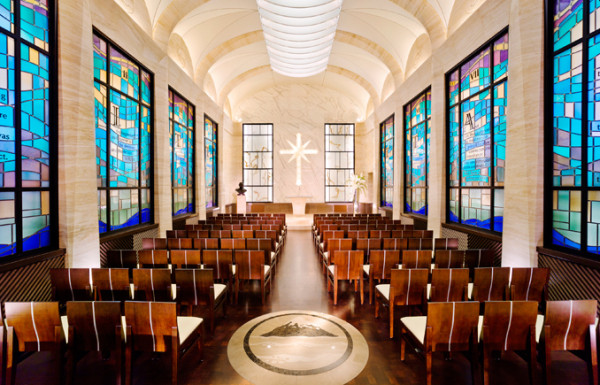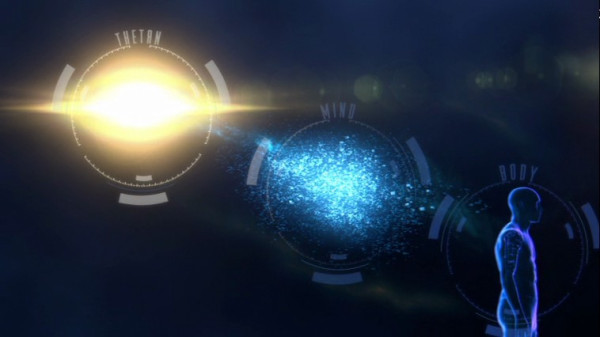A report on Scientology by a renowned historian analyzed, surfaced anew after the gran opening of a new church in Paris, declaring it a legitimate religion with parallels to established faiths. He argued it has deep doctrinal content, ritual practices, and an organized community structure. His scholarly work presented a compelling new perspective on Scientology’s place among the world’s religions.
Brussels, Brussels, Belgium, 16th Apr 2024 – While Scientology is often the subject of strong curiosity worldwide, an academic analysis argues that it deserves recognition as a fully-fledged religion – one that shares striking parallels with established spiritual traditions around the world. In a paper, renowned historian of religions Dario Sabbatucci provided a detailed exploration of Scientology’s origins, doctrines, and ritual practices, positioning it alongside the likes of Christianity, Buddhism, and Islam.
Sabbatucci’s work challenges common perceptions, revealing a sophisticated belief system complete with its own theology, path to enlightenment, and ecclesiastical structure. Through this scholarly lens, the religion founded by L. Ron Hubbard emerges not as a movement at the perimeter of old traditions, but as a modern embodiment of humanity’s timeless quest for spiritual understanding and transcendence.
As religious pluralism continues to shape the global landscape, Sabbatucci’s analysis invites society and media to reconsider assumptions about what qualifies as a legitimate faith. His work offers a compelling new framework for understanding Scientology’s place in the diverse tapestry of the world’s religions. This unexpected perspective is sure to captivate readers, from believers and curious to students of theology, sociology and journalism alike.
Sabbatucci’s exposition, titled “Scientology: Its Historical Morphological Frame,” delves into the origins, doctrines, and practices of Scientology, drawing comparisons with other world religions, and arises as if it would be new due to the recent grand-opening of an 8800 square meters new church of Scientology in Paris that has surpassed all expectations.

Origins and Foundational Beliefs
Scientology emerged from the teachings of L. Ron Hubbard, a figure Sabbatucci describes as a “charismatic founder” akin to religious prophets such as Buddha, Christ, and Muhammad. However, Hubbard’s claim was not of divinity but of discovering a path to spiritual enlightenment. “Mr. Hubbard did not claim godhood or that he was visited with divine revelation,” Sabbatucci notes. Instead, Hubbard positioned himself as a man who had uncovered a route to “spiritual enlightenment, salvation, and freedom.“
The religion itself was catalyzed by Hubbard’s 1950 publication, “Dianetics: The Modern Science of Mental Health,” which called for self-achievement against external chaos. Sabbatucci emphasizes that despite its scientific aurea, Scientology should be viewed through a religious lens, similar to Bahaism and Christian Science, which also blend scientific presentation with spiritual doctrines.

Scientology Doctrinal Insights
At its core, Scientology substitutes traditional theology with what could be termed ‘scientology’—a study of knowledge rather than a study of God. Sabbatucci explains, “Instead of being the study (-logy) of God (theo-), we have the study (-logy) of knowledge (sciento-).” This knowledge, though requiring study and application, is considered spiritual and transcendent, aiming to provide insights into the absolute, which at the end, as European Scientology representative Ivan Arjona says “brings you a study knowledge about self, life, and what is commonly known as God”.

A central concept in Scientology is the “thetan,” almost analogous to the soul in Christianity but distinct in its attributes and implications. “The notion of thetan is basic for the Scientology faith, as much as the notion of soul is for the Christian faith,” Sabbatucci clarifies. The term ‘thetan’ is derived to meet the needs of a new religion, representing an immutable essence transcending physical forms.
Scientology’s rituals and community practices also mirror those of traditional religions. The first Church of Scientology was established in 1954, adopting an ecclesiastical model similar to Christian churches and spreading rapidly across the globe. Sabbatucci details the ritual of “auditing,” a practice central to Scientology, which he compares to a form of spiritual counseling akin to practices in Zen Buddhism. “Auditing is phenomenologically an initiating rite even though it is practiced at all levels of the Scientology religion,” he states.
Legal and Cultural Recognition
In his final considerations, Sabbatucci addresses the question of whether Scientology qualifies as a religion. He argues that it does, based on its resemblance to other religions, its organizational structure, and its pursuit of spiritual enlightenment and salvation. “What makes Scientology recognizable as a religion is first its resemblance to other religions,” Sabbatucci asserts. He also highlights the religion’s ability to transcend traditional theological and eschatological boundaries, further cementing its status as a legitimate belief system.
Through Sabbatucci’s scholarly lens, Scientology is depicted as a legitimate religious movement with deep doctrinal content, ritual practices, and an organized community that parallels the historical and morphological frameworks of established religions. His analysis provides a clear, structured argument for recognizing Scientology within the global religious landscape, emphasizing its unique yet familiar approach to spiritual questions of existence, knowledge, and the cosmos.
Who was Dario Sabbatucci?
Dr. Sabbatucci, was a preeminent Italian historian of religions, who passed away on December 22, 2002, in Rome, marking the end of a distinguished career that reshaped understanding of religious cultures across the Mediterranean and Near East. Born on December 22, 1923, in the small hamlet of Piaggia, Sabbatucci was a pivotal figure in the Roman School of History of Religions, known for its historicist approach and comparative methodology. A disciple of Raffaele Pettazzoni and collaborator with luminaries such as Angelo Brelich, Ernesto de Martino, and Vittorio Lanternari, Sabbatucci brought new perspectives to the study of myths and rituals. His tenure at the University of Rome “La Sapienza” was marked by groundbreaking interpretations that enriched the academic discourse surrounding Greek mysticism, the evolution of polytheism, the origins of monotheism, and an analysis of Scientology.
Sabbatucci’s scholarly contributions include a plethora of influential publications, such as “L’edilità romana: magistratura e sacerdozio,” “Il mito di Acca Larentia,” and “Mistica agraria e demistificazione.” These works not only highlight his deep engagement with ancient religious practices but also underscore his role in advancing the field of religious studies.
Media Contact
Organization: European Office Church of Scientology for Public Affairs and Human Rights
Contact Person: Ivan Arjona
Website: https://www.europeanaffairs.eu
Email: Send Email
Address: Boulevard de Waterloo 103
City: Brussels
State: Brussels
Country: Belgium
Release Id: 16042411143
The post Rethinking Scientology: A Modern Religion’s Quest for Spiritual Enlightenment in the views of late expert Dario Sabbatucci appeared first on King NewsWire. It is provided by a third-party content provider. King Newswire makes no warranties or representations in connection with it.
Disclaimer: The views, suggestions, and opinions expressed here are the sole responsibility of the experts. No Current Hue journalist was involved in the writing and production of this article.
